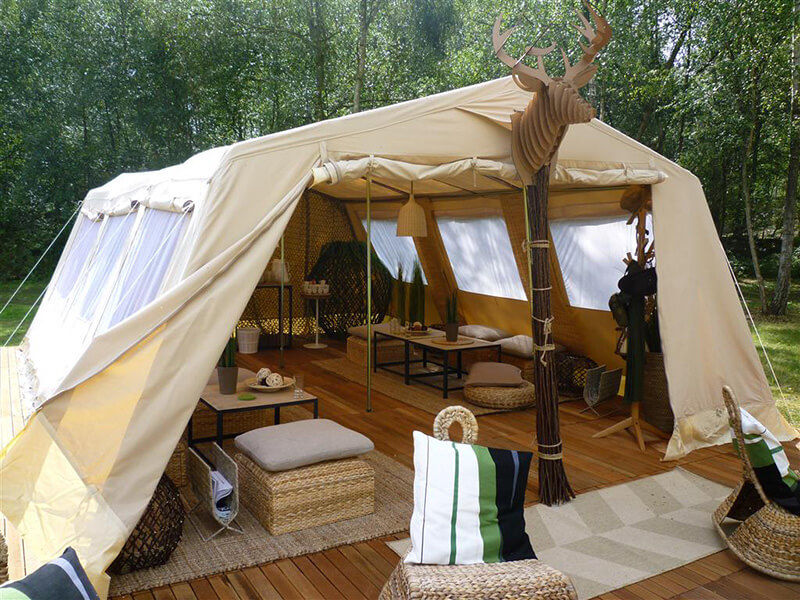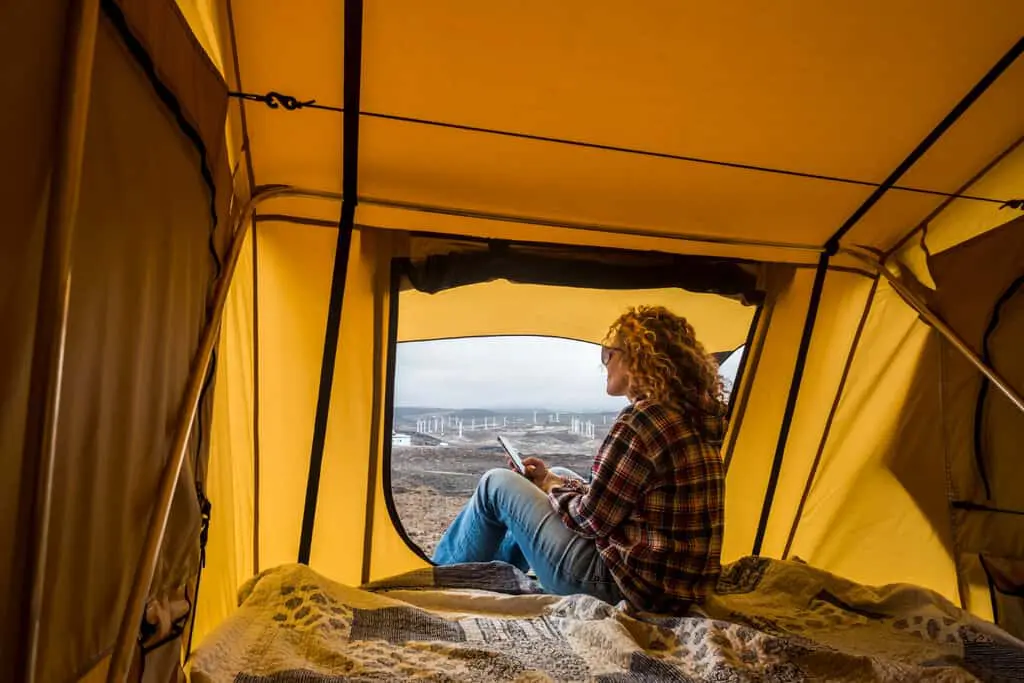I. Introduction

A. The allure of living in a tent and embracing a simpler lifestyle
Living in a tent represents a departure from the conventional way of life, allowing individuals to embrace a simpler, more nomadic lifestyle. This article will explore the possibilities and challenges of living in a tent, highlighting the advantages and considerations that come with this alternative way of living.
B. Overview of the article’s focus on the possibilities and challenges of living in a tent
This article aims to provide a comprehensive guide on the topic of living in a tent. It will delve into the advantages of embracing a minimalist lifestyle, such as freedom from material possessions and reduced environmental impact, as well as the flexibility and mobility that come with tent living. Additionally, it will discuss the essential considerations in terms of choosing the right tent and selecting a suitable location for year-round living.
II. The Advantages of Living in a Tent

A. Embracing a minimalist lifestyle
One of the main advantages of living in a tent is the opportunity to embrace a minimalist lifestyle. This includes freedom from material possessions and decluttering one’s life, which can lead to a sense of liberation and increased mental clarity. Furthermore, living with fewer belongings reduces one’s environmental impact and promotes sustainability.
B. Flexibility and mobility
Living in a tent provides individuals with the freedom to move and explore new places easily. Unlike traditional homes, tents are highly portable and can be set up and taken down relatively quickly. This flexibility allows tent dwellers to experience different environments and cultures, fostering a sense of adventure and exploration. Additionally, the lower costs associated with tent living can provide financial freedom and the ability to live a more independent and self-sufficient lifestyle.
III. Essential Considerations for Living in a Tent
A. Choosing the right tent
Selecting the right tent is crucial for a successful and comfortable tent-living experience. Factors to consider when choosing a tent include size (taking into account the number of occupants), durability, and weather resistance. Additionally, considering long-term use and comfort is essential, as a tent will serve as a primary living space.
B. Selecting a suitable location
.jpg)
Finding a suitable location for living in a tent involves several considerations. Legal considerations and land access must be researched and understood to ensure compliance with local regulations. Additionally, finding a suitable environment for year-round living, such as a climate that aligns with personal preferences and accessibility to necessary amenities or resources, is important for long-term comfort and sustainability.
By carefully considering these essential factors, individuals can create a more enjoyable and sustainable living experience when residing in a tent.
IV. Setting Up a Sustainable Tent Home
A. Creating a Functional Living Space
Creating a functional living space in a tent requires thoughtful planning and organization. Consider the following:
- Utilizing storage solutions and organization: Maximize the available space within the tent by using storage containers, shelves, and hanging organizers. Utilize vertical space and create designated areas for different purposes such as sleeping, cooking, and relaxation.
- Designing a comfortable sleeping area and living space: Invest in a quality sleeping pad or air mattress to ensure a comfortable sleep. Consider adding rugs or mats to create a cozy living space. Arrange furniture, such as foldable chairs and tables, to optimize the layout and functionality of the tent.
B. Managing Utilities and Necessities
Living in a tent requires managing utilities and necessities effectively. Consider the following:
- Water collection and filtration systems: Set up a system to collect rainwater for various uses, including drinking, cooking, and cleaning. Install a water filtration system or use portable water filters to ensure the safety and cleanliness of the water.
- Solar power and alternative energy sources: Embrace sustainable energy solutions by utilizing solar power. Install solar panels to generate electricity for lighting, charging devices, and powering small appliances. Explore other alternative energy sources such as wind or hydro power if suitable for the location.
V. Overcoming Challenges of Living in a Tent
Living in a tent comes with its challenges, but with proper preparations, they can be overcome. Consider the following:
A. Weather and Insulation
- Proper tent insulation and weatherproofing techniques: Insulating the tent can help regulate temperature and keep it comfortable in various weather conditions. Use insulation blankets or foam pads on the tent floor and walls to provide extra warmth during colder seasons. Ensure the tent is properly sealed to prevent drafts and moisture from entering.
- Coping with extreme weather conditions: Prepare for extreme weather conditions, such as heavy rain, strong winds, or extreme heat. Reinforce the tent with additional guy lines and stakes to secure it during storms. Keep an eye on weather forecasts and be prepared to seek shelter if necessary.
B. Maintaining Personal Hygiene and Sanitation
- Portable showers and sanitation solutions: Invest in portable shower systems that can be set up outside the tent. Use biodegradable soaps and shampoos to minimize environmental impact. Set up a designated area for washing dishes and maintaining cleanliness.
- Waste management and responsible disposal: Practice responsible waste management by minimizing waste production and separating recyclables from non-recyclables. Use biodegradable or compostable products when possible. Familiarize yourself with local regulations and dispose of waste properly.
VI. Embracing the Lifestyle of Living in a Tent
A. Connecting with Nature and the Outdoors
Living in a tent provides a unique opportunity to connect with nature and enjoy outdoor activities. Consider the following:
- Exploring outdoor activities and adventures: Take advantage of the natural surroundings and engage in activities such as hiking, fishing, or bird watching. Embrace the beauty of the wilderness and seek new adventures.
- Finding peace and serenity in nature: Spend time immersing yourself in the tranquility of nature. Meditate, practice yoga, or simply sit and appreciate the natural surroundings. Let nature’s beauty and peacefulness rejuvenate your mind and soul.
B. Building a Sense of Community and Support
Living in a tent does not have to be a solitary experience. Consider the following:
- Engaging with other tent dwellers or tiny home communities: Seek out communities of like-minded individuals who also choose to live in tents or tiny homes. Engage in group activities, discussions, or communal projects. Share experiences and learn from one another.
- Sharing resources and knowledge: Foster a sense of community by sharing resources, knowledge, and skills. Help each other with tasks, exchange tips for sustainable living, and collaborate on projects that benefit the community and the environment.
Conclusion
Living in a tent offers a unique and sustainable lifestyle that embraces simplicity, freedom, and a deeper connection with nature. By setting up a functional living space, managing utilities and necessities effectively, and overcoming the challenges that come with tent living, one can truly embrace this alternative lifestyle. By connecting with nature, engaging in outdoor activities, and building a sense of community, the experience of living in a tent becomes transformative and fulfilling. So, consider the possibilities, embrace the freedom, and embark on a new journey of simplicity and self-discovery by living in a tent.
